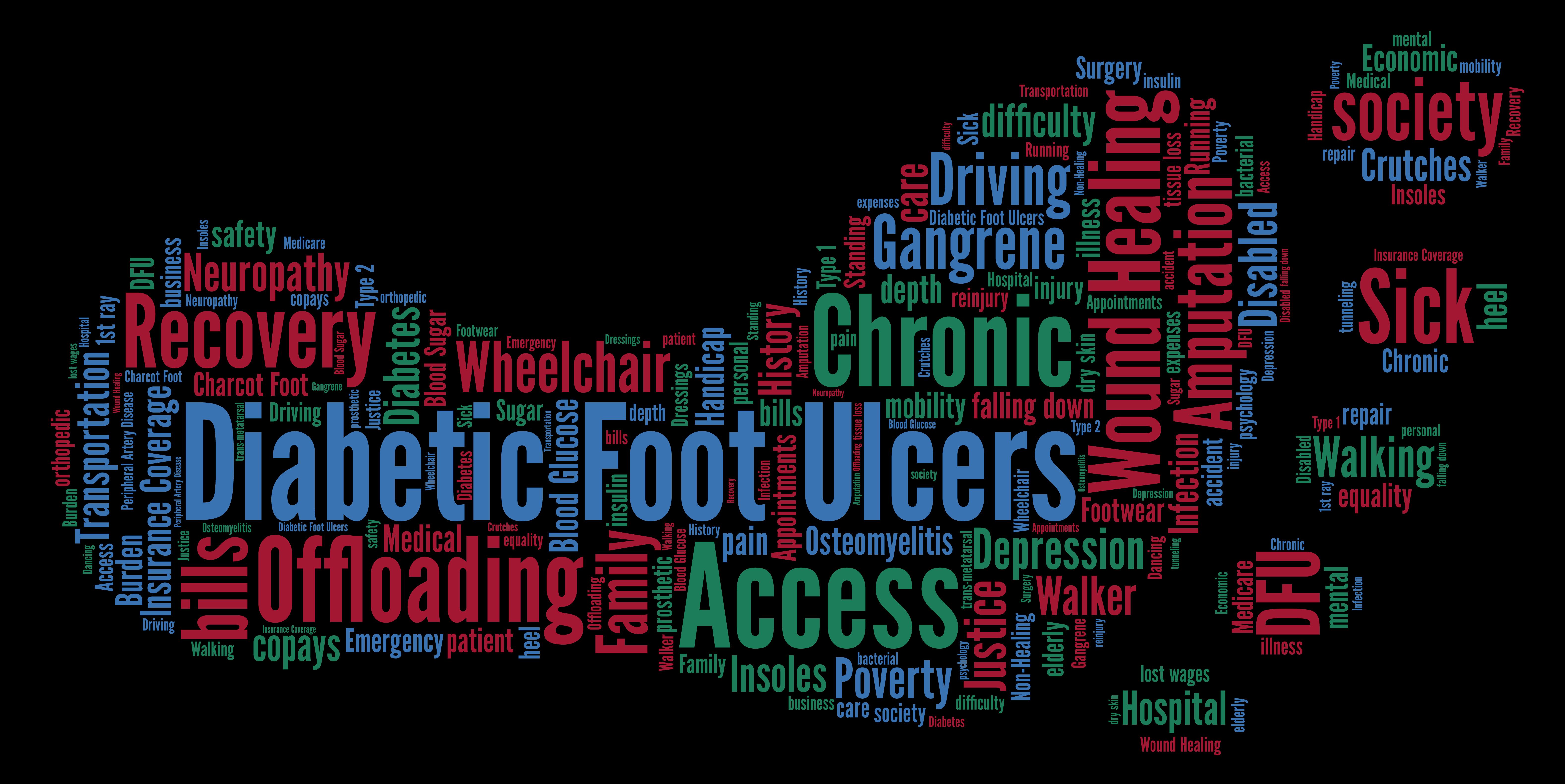Your shopping cart is empty!
One reason is that OFFLOADING, which is necessary to heal plantar DFUs, is grossly underutilized. Fewer than 10% of patients receive any type of proven-effective offloading care.
Provided there is adequate blood circulation, most plantar diabetic foot ulcers (DFUs) can be healed with proper offloading and regular debridement. For most cases, expensive adjunct therapies such as tissue grafts and advanced dressings are unnecessary, or are of only of secondary importance for healing DFUs.
And yet, recent data shows that the number of diabetes related amputations is actually increasing, including major amputations. Additionally, multiple studies over the past 20 years have shown that most plantar DFU patients do not receive any type of plantar offloading. So, with all of the expensive and advanced wound care technologies that are available to practitioners, why are amputations increasing?
Certainly, healing rates would improve immediately with greater use of effective offloading devices.

For nearly 50 years the Total Contact Cast (or TCC) has been described in the literature as the “gold standard” for offloading DFUs. Consequently, TCC is also the only reimbursed offloading method.
And yet, TCC is used for under 5% of DFU patients. Why is this? Because patients dont want to be put in TCCs, and health care practitioners dont want to apply TCCs.
Proven Effective:
A recent study at Temple University demonstrated that FORS reduced pressure on ulcerated areas an average of 43.4%, without creating any unwanted increases in pressure along the edges of the ulcerated areas.
Patients Can Maintain Their Mobility
The FORS -15 insole in a standard surgical shoe can be tolerated by most patients without substantially altering their gait (how they must move to walk).
Offloading devices that force patients to alter their gate to ambulate, such as the TCC, CAM boots (Controlled Ankle Motion), and forefoot or rearfoot “wedge” shoes can often increase the risk of falling and cause secondary injuries such as abrasions, broken bones or worse. For patients already at risk of falling due to diabetic neuropathy and/or other conditions, devices that further increase their risk of falling may be contraindicated or simply unacceptable.
Even if not recommended, many patients must be able to drive to receive DFU care.
Many patients do not have family members to drive them to their medical appointments, and / or may need to drive to maintain their employment to be able to pay for their medical care. For DFUs that affect the right foot (used for driving), TCCs or other “non-removable” offloading devices that prevent patients from driving may also prevent them from being able to receive care. For many DFU patients and their families, loss of mobility can cascade into loss of employment income and increased transportation requirements that create unsustainable stress. While driving with a DFU is not ideal, for many patients its a necessity to access care. With the FORS-15, patients can strategize with their healthcare providers to determine how to best maintain effective DFU offloading while meeting their mobility needs.
Durability and Cleanliness:
The FORS -15 insole is constructed from durable materials that provide effective offloading for significantly longer than is required to heal most ulcers. The FORS-15 insole is easily cleaned and disinfected by soaking in diluted chlorine bleach for 5 minutes, then rinse and air dry. (Dilute 1 part standard bleach with 19 parts tap water).
Easy for Patients and Practitioners:
The FORS insole with a standard surgical shoe is priced below $90. For a small investment, patients can receive effective offloading for their DFU with the convenience of wearing a simple and removable surgical shoe. FORS can be worn by most patients without creating any significant increase in their risk of falling. The FORS is a convenient and effective alternative to TCCs, and can help many patients improve the likelihood of healing their diabetic foot ulcers.
For physicians, FORS is a viable solution for their patients, that does not put a strain on the practice. Wholesale pricing is available to enable physicians to dispense a proven and wearable offloading shoe, and charge a reasonable fee for their services.
Physician Feedback
Some Resources That are Worth Checking Out
Write a Comment